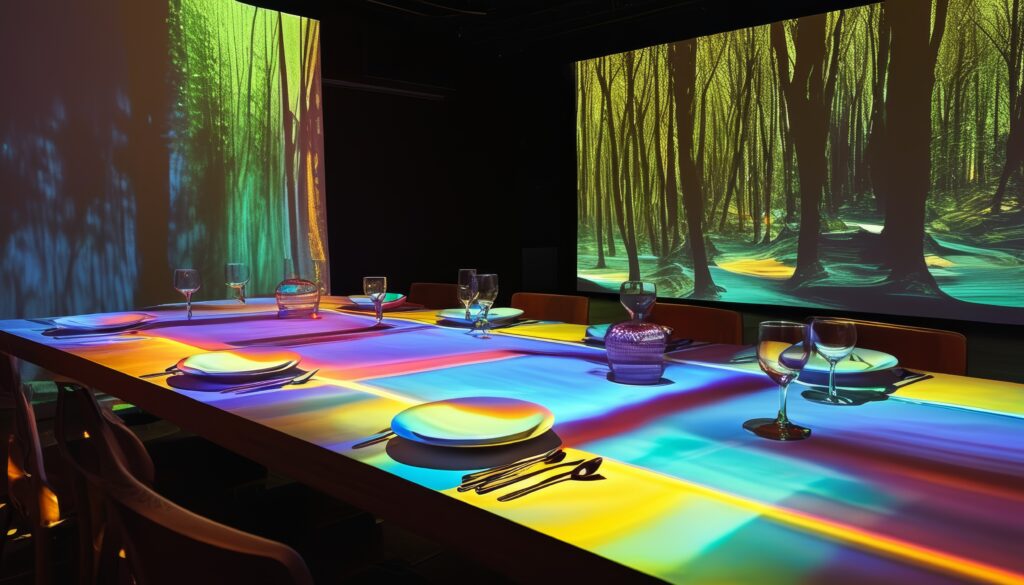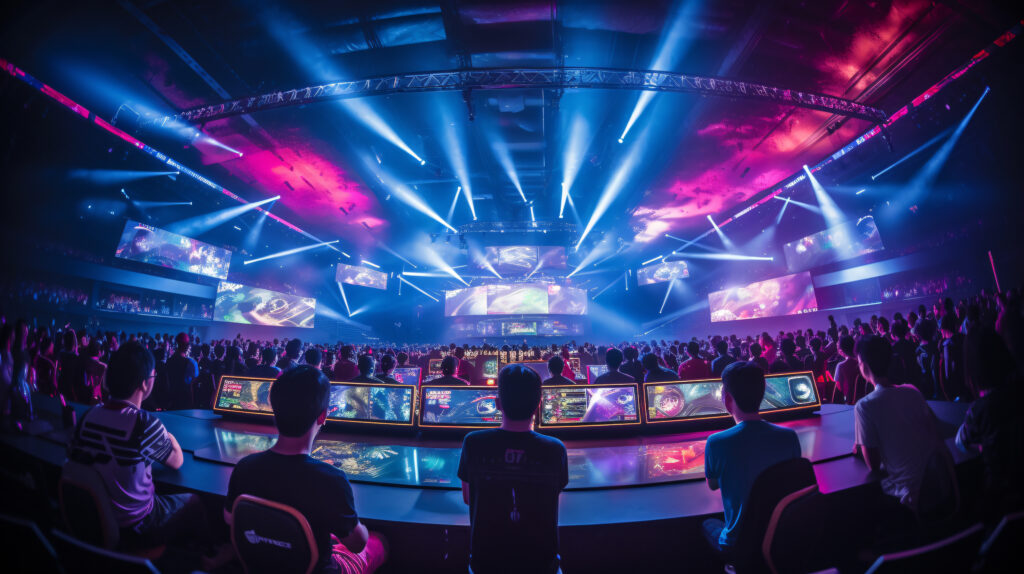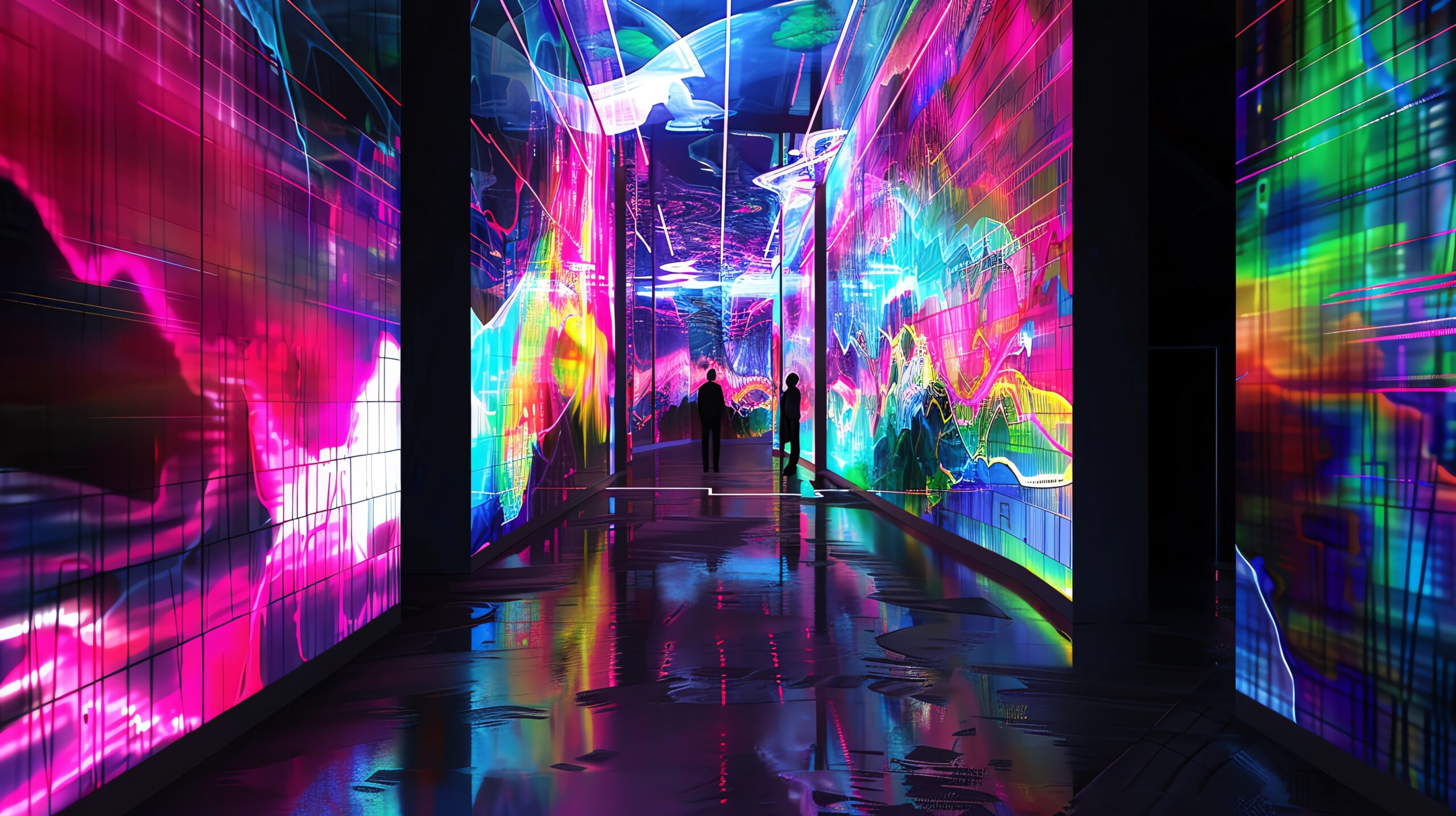Because a stage is just a stage… until it starts whispering secrets.
In experiential, everyone’s chasing “immersion.” But let’s be honest—it’s become the cold brew of our industry: overused, under-thought, and rarely done well. True immersion isn’t about LED tunnels or Instagrammable florals. It’s about story and how your attendees experience it through the physical environment itself.
We call this narrative architecture. It’s not about spectacle. It’s about crafting spaces that move like a story. Spaces that build emotional rhythm, tension, curiosity, and release. If your “set design” isn’t narrating a journey, you’re not just missing an opportunity—you’re missing the entire point.
Let’s unpack what this looks like, act by act.
Act I: The Entrance – The First Page of the Plot
You never get a second chance at a first impression—unless you build one they can’t forget.
The entrance is your moment to prime the audience. It’s your opening scene. It should whisper to attendees, “You’ve left the real world. Something else is happening here.”
Design Tactics:
- Threshold moments: Build suspense with tunnels, winding paths, or low-lit corridors that open into an unexpected reveal.
- Symbolic cues: Use color, scale, or material shifts to signal thematic meaning. Entering a high-concept luxury experience? Maybe guests walk through a curtain of pearls or mirrored arches that feel like stepping into another reality.
- Soundscaping: Subtle ambient sound (or purposeful silence) sets tone faster than signage ever will.
This is where narrative architecture lays its hook. If your entrance doesn’t already have an emotional effect—surprise, serenity, disorientation, awe—you’re just herding people through a gate.

Act II: The Build – Worldbuilding as Emotional Infrastructure
Now that they’re inside, what world are they in? More importantly: what’s the emotional journey they’re about to go on?
Too often, events are flat. Literally. One big open room with too many chairs, too much brand presence, and too little soul. Narrative design solves this by layering your event like a film script. There’s plot. There’s character development. There are turning points.
Design Tactics:
- Spatial storytelling: Think scene-to-scene. Maybe there’s a transformation corridor between your general session and your breakout area. Or an intentionally narrow transition space that creates intimacy before a reveal.
- Visual motifs: Recurring symbols, shapes, or lighting treatments give subconscious consistency. Just like a director uses specific color palettes to tell a story arc, your set should, too.
- Zoning = pacing: Just as a good story has slow and fast moments, so should your space. Use seating areas, high-energy zones, or serene hideaways to give the attendee breathing room and momentum.

This is how you build emotional gravity. People don’t just move through the space—they feel moved by it.
Act III: The Climax – Where Meaning Meets Memory
The climax of your story is the emotional peak—the “remember when…” moment your guests will carry with them. But it doesn’t just happen. You have to design for it.
It might be a product reveal, a speech, a performance, or an unexpected shift in lighting that transforms the space before their eyes. This is the part where your space, your story, and your intention align.
Design Tactics:
- Use of contrast: Dimmed lighting throughout the event? Flood the climax zone with light or kinetic visuals. The contrast creates drama.
- Scenic transformation: Can a structure open? Can the floor drop away? Can the backdrop move with the story? Use movement to mirror emotional shifts.
- Elevated focal points: Don’t just put your “moment” on a stage. Build it into the bones of the space so it feels like it emerged from the environment.
Climaxes aren’t only for big-budget galas. Even a dinner can have one—an unexpected toast, a surprise guest, a lighting shift synced to a playlist. It’s about momentum and payoff.

Act IV: The Resolution – The Gentle Goodbye
Here’s where most events drop the mic—and the mood. One minute you’re in a magical immersive world, the next you’re under buzzing fluorescent lights trying to find the coat check.
But resolution matters. It’s what transforms a moment into a memory. It’s your epilogue, your fade to black, your post-credits scene.
Design Tactics:
- Echo your beginning: If the guest journey started with a whisper, maybe it ends with a soft sendoff—like a gift tied to the theme, or a soundscape that gently loops back to the start.
- Physical decompression zones: Transitional spaces help guests emotionally land. A reflective lounge or pathway out that lets people linger and process keeps them in the story a little longer.
- Intentional parting gesture: Whether it’s a final scent note, a poetic message on a wall, or a hand-delivered takeaway, the goodbye should feel crafted.
This is your chance to leave a lasting impression—not by going bigger, but by going deeper.
Why It Matters (a.k.a. Your Final Plot Twist)
Anyone can build a stage. Not everyone can build a story.
In a landscape filled with flashy production and fleeting attention spans, it’s narrative that creates emotional resonance. It’s storytelling—not scale—that makes people remember how your event made them feel.
So next time you’re walking a venue, reviewing CADs, or concepting a scenic build, ask yourself: “Is this a set… or a scene?”
Because if the space isn’t part of the story, well, it’s just taking up space.



